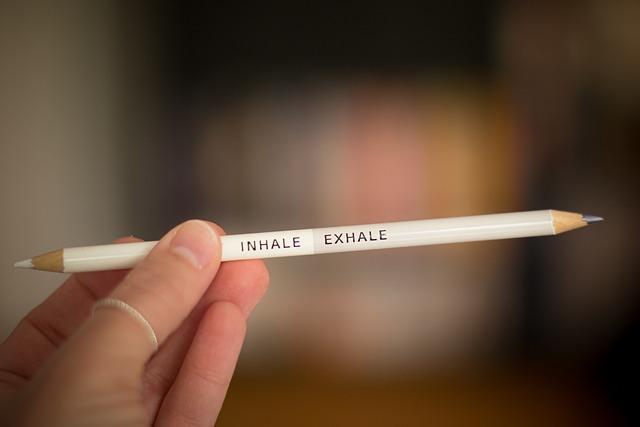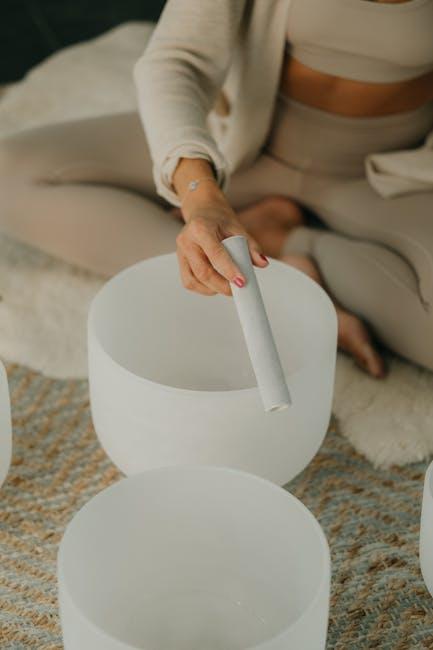In the hustle and bustle of modern life, finding moments of calm can seem like an elusive dream. Yet, within the whirlwind of deadlines and to-do lists, there lies a simple solution: mindfulness. Imagine being able to pause, breathe, and truly experience each moment with clarity and peace. This article explores easy steps to cultivate mindfulness, offering a gentle guide to reducing daily stress and embracing tranquility. Whether you’re a seasoned practitioner or a curious newcomer, these practical tips will help you navigate the chaos with grace and intention. Mindful Breathing Techniques for Instant Calm”>
Mindful Breathing Techniques for Instant Calm”>
Mindful Breathing Techniques for Instant Calm
Incorporating simple breathing techniques into your daily routine can be a powerful way to cultivate mindfulness and bring instant calm. These practices require only a few moments and can be done anywhere, anytime. Here are some effective techniques to help you center yourself:
- Deep Belly Breathing: Sit or lie down in a comfortable position. Place one hand on your chest and the other on your belly. Inhale deeply through your nose, allowing your belly to expand and your chest to rise. Exhale slowly through your mouth, feeling your body relax with each breath.
- Box Breathing: Inhale slowly to a count of four, hold your breath for four counts, exhale for four counts, and pause for another four counts before repeating. This rhythmic pattern helps to focus the mind and alleviate stress.
- Alternate Nostril Breathing: Use your thumb to close one nostril and inhale through the open nostril. Close the open nostril with your finger, release the thumb, and exhale through the other nostril. This technique balances the body and mind, promoting a sense of tranquility.
By regularly practicing these mindful breathing techniques, you can create a peaceful pause in your day, reducing stress and enhancing your overall well-being.
Creating a Daily Mindfulness Routine
Integrating mindfulness into your daily life doesn’t have to be complicated. Start by setting aside just a few minutes each day to focus on the present moment. This could be during your morning coffee or a quiet evening walk. Use these moments to engage in mindful breathing—inhale deeply, hold for a moment, and exhale slowly, paying attention to each breath.
- Start Small: Begin with 5-minute sessions and gradually increase as you become more comfortable.
- Choose a Trigger: Link mindfulness to daily activities like brushing your teeth or waiting for the kettle to boil.
- Embrace Nature: Spend a few moments observing the natural world, whether it’s watching the clouds or listening to birds.
- Practice Gratitude: End your day by reflecting on three things you’re thankful for, fostering a positive mindset.

Incorporating Mindfulness into Everyday Activities
Mindfulness doesn’t require a special time or place; it can be seamlessly integrated into your daily routine, transforming ordinary moments into opportunities for presence and calm. By engaging fully in what you’re doing, you can cultivate a sense of peace and clarity. Here are some simple ways to infuse mindfulness into everyday activities:
- Morning Routine: As you brush your teeth or shower, focus on the sensations and movements. Notice the texture of the toothpaste or the sound of water, anchoring yourself in the present moment.
- Mindful Eating: Turn off distractions and savor each bite during meals. Pay attention to the flavors, textures, and aromas, transforming eating into a sensory experience.
- Walking Meditation: Whether you’re commuting or taking a short stroll, walk slowly and deliberately. Feel the ground beneath your feet and observe your surroundings without judgment.
- Mindful Listening: During conversations, listen actively without planning your response. Give your full attention to the speaker, noticing their words and emotions.
- Evening Reflection: Before bed, take a few moments to reflect on your day. Acknowledge your thoughts and feelings without judgment, allowing them to pass like clouds in the sky.
By incorporating these practices, you can gradually reduce stress and enhance your overall well-being, making mindfulness a natural part of your life.

Using Guided Meditation for Stress Relief
Guided meditation serves as a powerful tool for alleviating stress, offering a structured pathway to serenity. By following a calm and reassuring voice, you can journey into a realm of tranquility, leaving the chaos of daily life behind. Mindful breathing, body scanning, and visualization are common techniques used, each designed to anchor your thoughts and emotions. This practice not only helps in releasing tension but also fosters a sense of inner peace and clarity.
- Mindful Breathing: Focus on your breath to center your thoughts.
- Body Scanning: Relax each part of your body systematically.
- Visualization: Imagine a peaceful scene to transport your mind.
To get started, find a quiet space, sit comfortably, and choose a guided meditation that resonates with you. Whether it’s a short 5-minute session or a more extended practice, consistency is key. Regular engagement with guided meditation can transform stress into a more manageable part of life, enhancing overall well-being.





